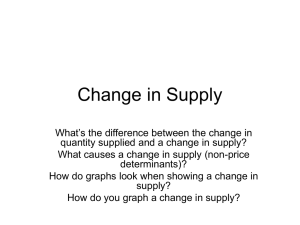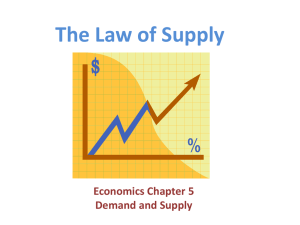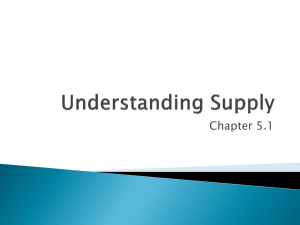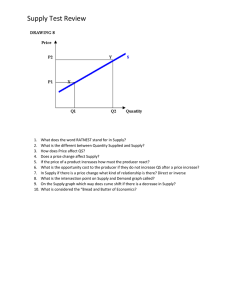Chpt. 3: Supply
advertisement
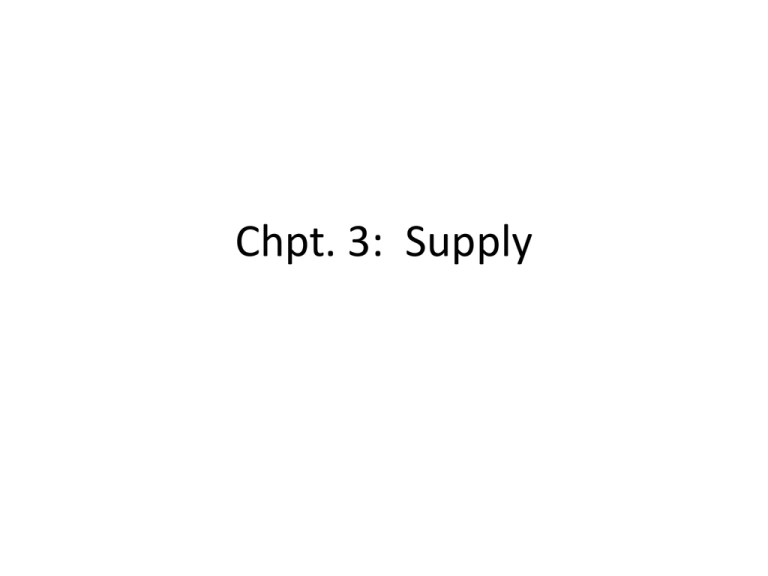
Chpt. 3: Supply Supply • Quantity supplied – The amount of the good or service that producers are willing and able to sell at the current price • Law of demand – All other things equal, there is a direct relationship between price and quantity supplied. – Direct: two variables move in the same direction Supply • Supply schedule – Table showing the relationship between price and quantity supplied • Supply curve – Graph of the relationship between price and quantity supplied • Market supply – Horizontal sum of all individual quantities supplied by each seller in the market at each price Supply Pure Food Fish’s Supply Schedule Price of Salmon Higher price Lower price $20.00 $17.50 $15.00 $12.50 $10.00 $ 7.50 $ 5.00 $ 2.50 $ 0.00 Salmon Fillets Supplied 800 700 600 500 400 300 200 100 0 Higher quantity supplied Lower quantity supplied Market Supply Price of Salmon $20.00 $17.50 $15.00 $12.50 $10.00 $ 7.50 $ 5.00 $ 2.50 $ 0.00 Pure Food Fish’s Supply 800 700 600 500 400 300 200 100 0 + City Fish’s Supply 200 175 150 125 100 75 50 25 0 = Market Supply 1000 875 750 625 500 375 250 125 0 Supply Curve + = Market Supply Shifts in Supply • Movement along a supply curve – Caused by a change in the price of the good – Direct relationship between price and quantity supplied • Shift in supply – Caused by non-price factors – Entire supply curve will shift to the left or right Supply Shifters 1. The cost of inputs • Inputs – Resources used in the production process – Direct relationship between input costs and supply curve 2. Changes in technology • Technology – Knowledge that producers have about how to produce a product – Direct relationship between level of technology and supply Supply Shifters 3. Taxes and subsidies • Tax – Tax paid by producer added cost of production – Inverse relationship between taxes and supply • Subsidy – “Opposite” of a tax; government pays sellers to produce goods. – Direct relationship between subsidies and supply Supply Shifters 4. Number of sellers/firms Recall the market supply curve – More individual sellers means more market supply. 5. Price expectations – Higher price expected tomorrow? If so, delay sales until future, if possible. – Inverse relationship between tomorrow’s expected price and today’s supply Summary of Supply Shifters Table 4.2 Factors That Shift the Supply Curve
